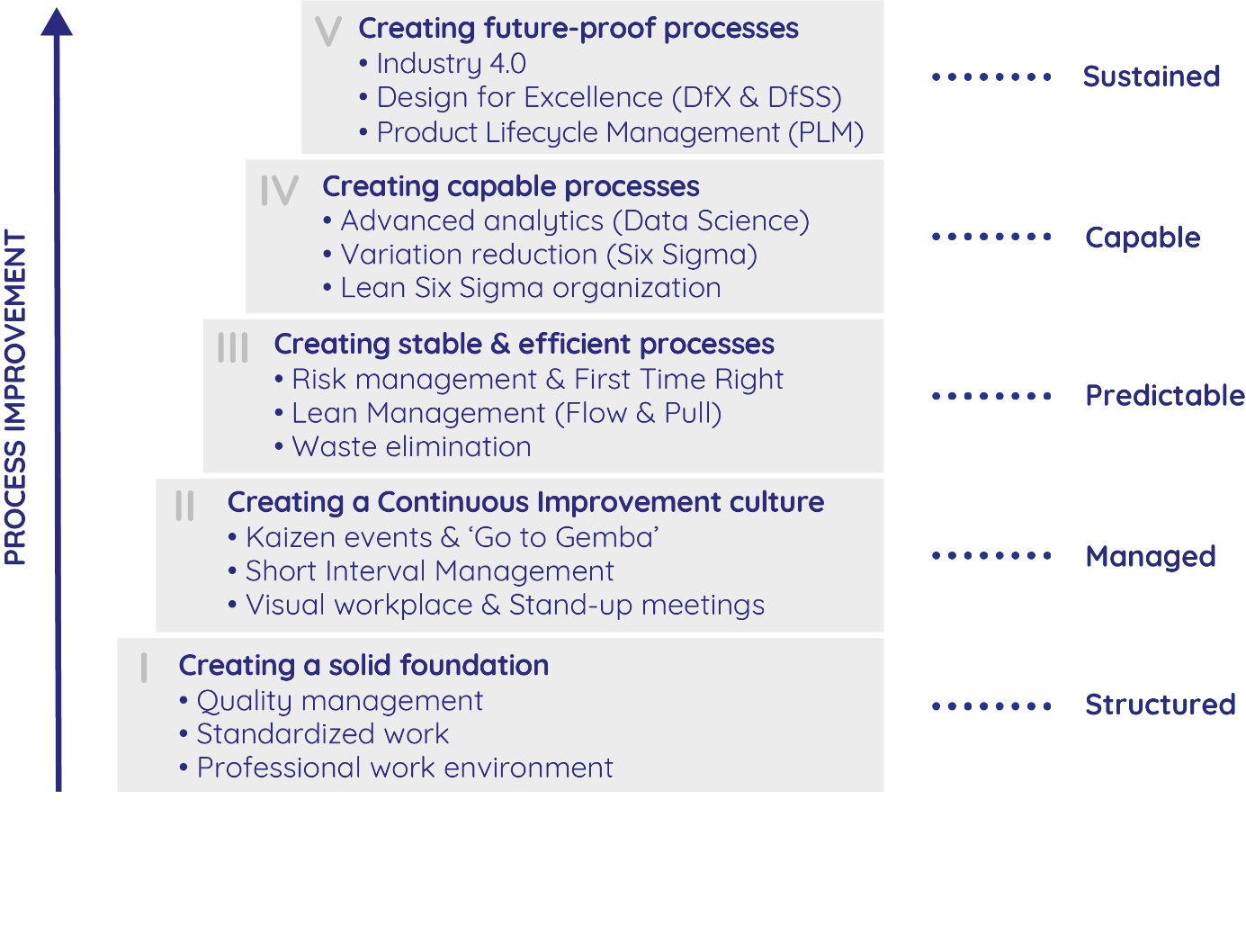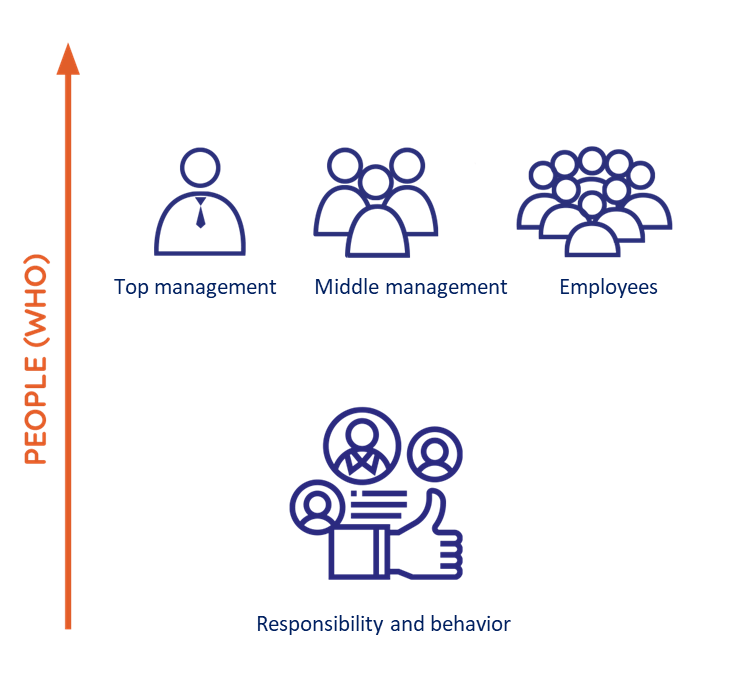The Continuous Improvement methodology that best suits for a certain organization heavily depends on the level of maturity of that organization. This also applies to the corresponding values and techniques. To support organizations to apply the best suitable methodology, the LSSA has developed the ‘Continuous Improvement Maturity Model’ (CIMM). CIMM summarizes best practices and techniques of different methodologies in one framework, for different stages of maturity.
Process (What)
The Continuous Improvement methodology that best suits for a certain organization heavily depends on the level of maturity of that organization. This also applies to the corresponding values and techniques. To support organizations to apply the best suitable methodology, the LSSA has developed the ‘Continuous Improvement Maturity Model’ (CIMM). CIMM summarizes best practices and techniques of different methodologies in one framework, for different stages of maturity.
The CIMM framework should be run sequentially as much as possible. It is not recommended to move on to the higher CIMM levels too quickly if the lower levels are insufficiently developed and secured. For example, it makes no sense to use statistical techniques to reduce the variation if the processes are not yet stable and predictable.

People (Who)
During the improvement of the processes, attention must also be paid to the development of employees and the organization. For each instrumental technique in the CIMM framework, it is possible to indicate the associated desired behavior.
The CIMM framework identifies a number of behaviors for each improvement technique, which helps determine whether or not the implementation of the technology in question will be a success and results in a lasting impact. A distinction is made here between the behavior of the top management, middle management and employees on the shop floor.

This element focuses on developing a clear vision and strategy. Employees are more involved and motivated by why they do things, than the actual things they do. Without a clear strategy, the organization is not effective at its goal. The process of continuous improvement and renewal begins by defining a clear strategy that will distinguish the organization from other organizations. The strategy must ensure cooperation and coordination between the different parts of the organization and connects strategic and operational objectives, initiatives and implementation. In order to ensure that set goals are indeed met, it is necessary to maintain focus. The required time and resources must be allocated and management must adhere to the defined priorities.
